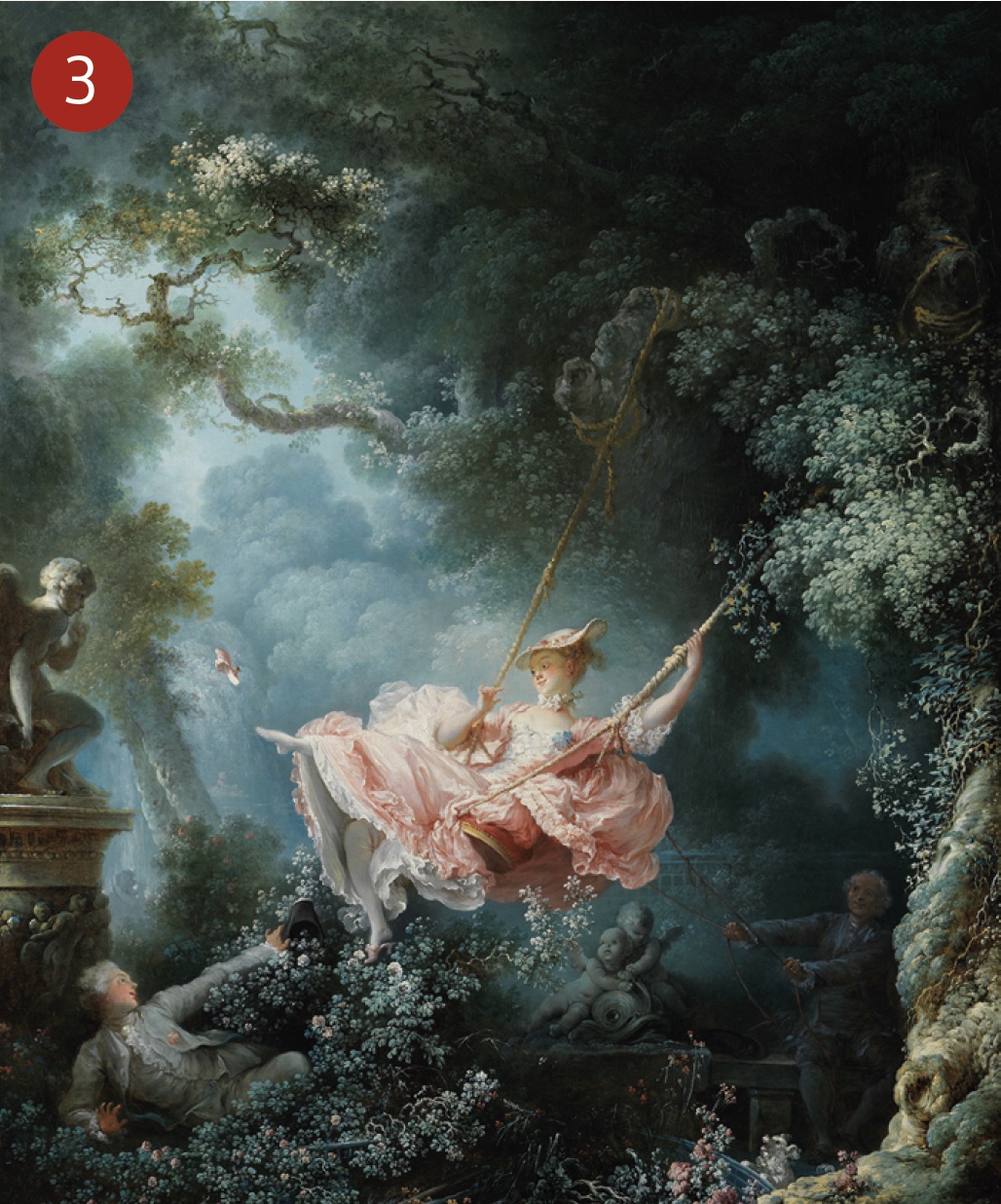#Rococo #ornate #style #returns #interiors #Antique #Collecting

Following the Decorative Fair’s recent celebration of rococo at its foyer exhibition, Antique Collecting showcases the light-hearted style that took 18th-century Europe by storm and is once more attracting collectors and interiors specialists
The Rococo style
Three centuries after rococo’s original incarnation, the whimsical style is back in fashion. From art fairs to the prevailing vogue for pastel maximalism, the trend for today’s interiors is overwhelmingly kitsch. The craze was also reflected at the foyer exhibition of the recent Decorative Fair in Battersea which was devoted to the style.
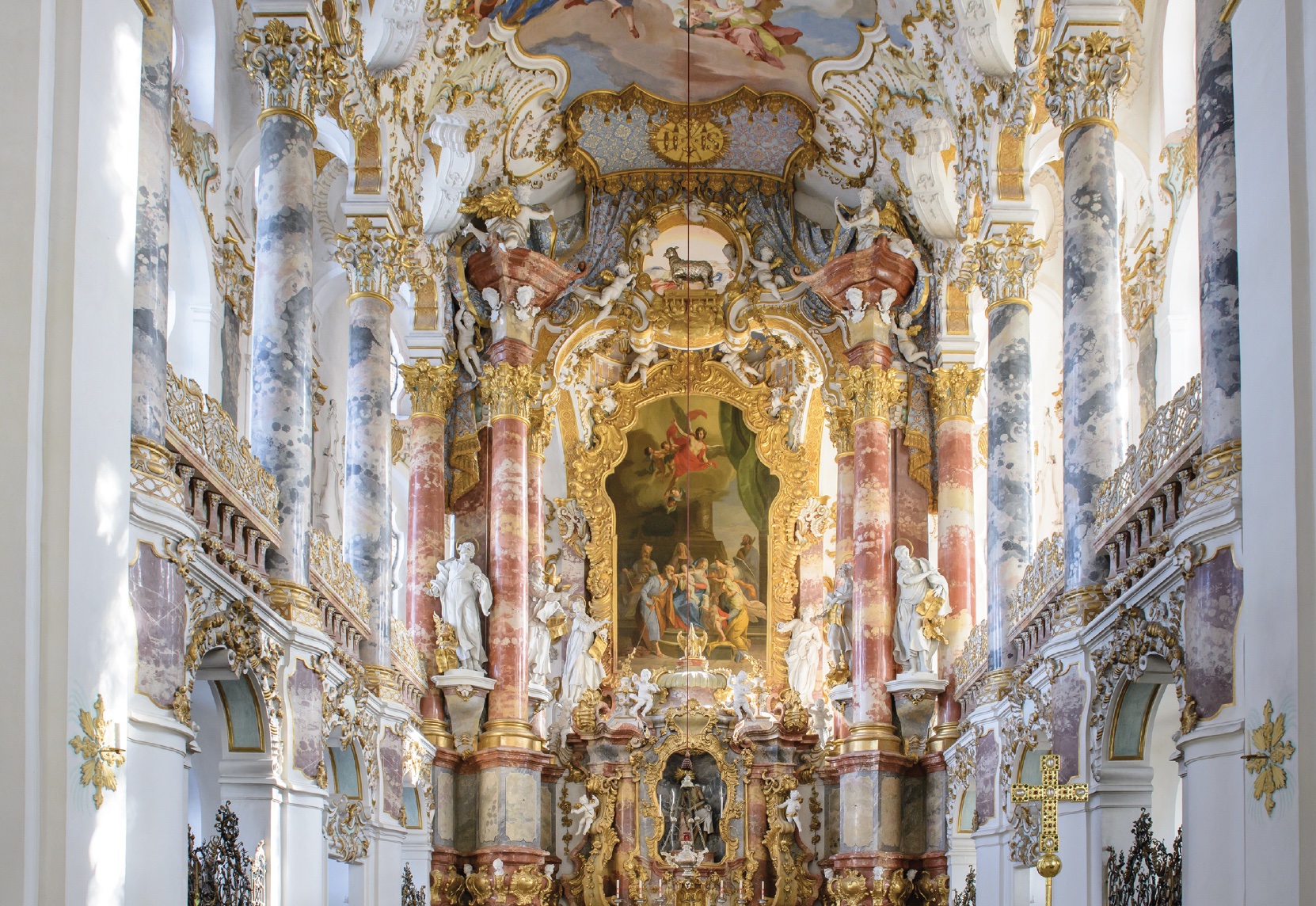
The fair’s Pippa Roberts said: “Rococo is reappearing in this season’s wallpaper and fabric launches – so this month the fair is celebrating this playful and endearing style.”
In part it has been sparked by recent lavish TV costume dramas featuring the Russian palaces of Catherine the Great in The Great, and the fabulous French chateau interiors from the BBC hit Marie Antoinette. Pippa continued: “Used judiciously (it is not a style for shrinking violets), rococo decoration can bring elements of splendid humour and visual excitement to a scheme.”
Anthony Bridgman director and head of restoration at Westland London, one of this month’s exhibitors, said: “The modern rococo interior embraces a more restrained and balanced aesthetic. Lavish chandeliers and elaborate mirrors are juxtaposed with simple, neutral colour palettes and uncluttered spaces. By blending historical grandeur with contemporary sophistication, modern Rococo interior design delivers a unique and captivating ambience that effortlessly marries the past and present.”
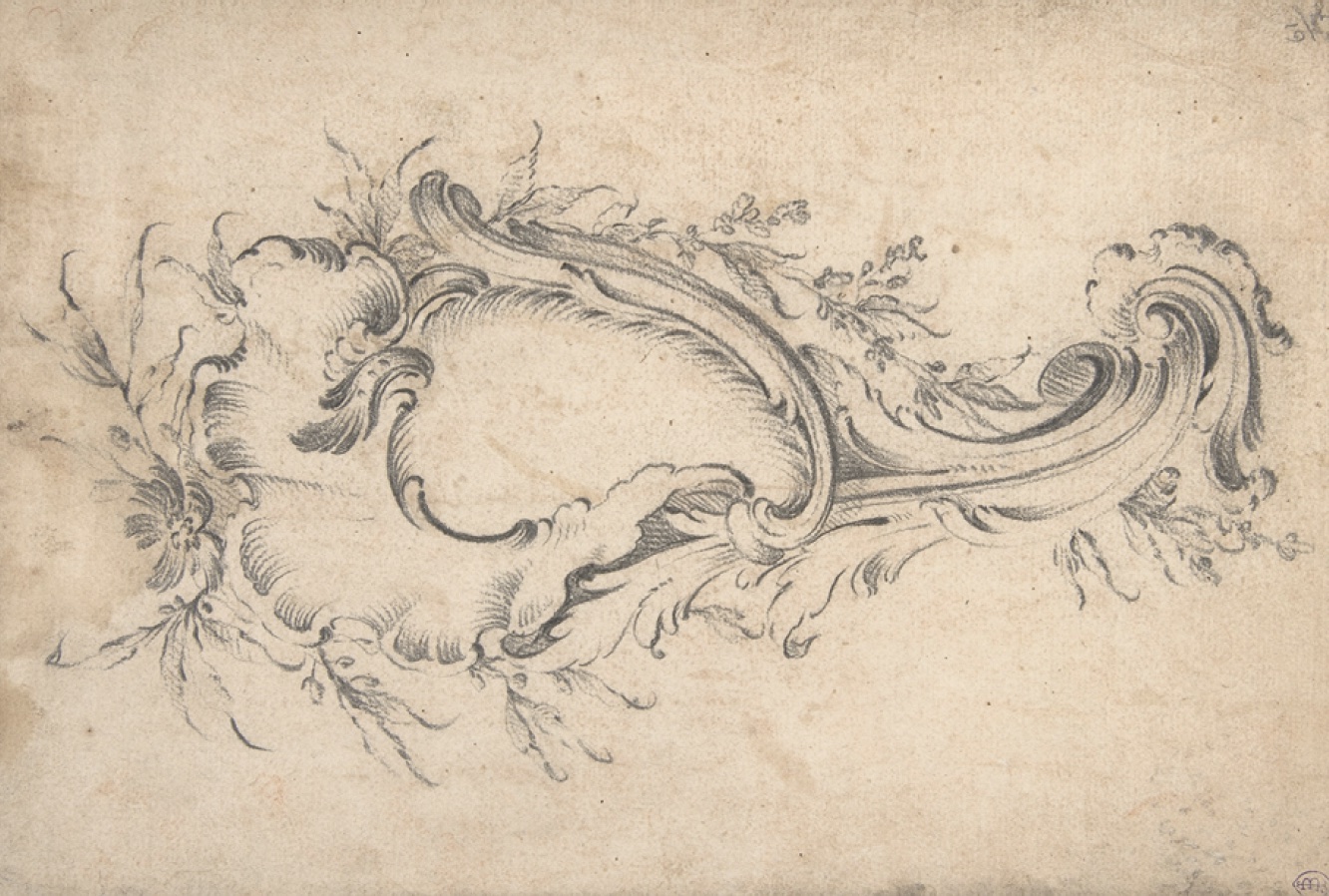
What is rococo?
The name comes from the French word, rocaille, originally referring to a method of decoration using pebbles, seashells, and cement, which had been used to decorate grottoes and fountains since the Renaissance. But in the late 17th and early 18th century, it was used to describe the new decorative motif of a seashell interlaced with acanthus leaves, as well as broader natural and marine decorations.
It also sparked a more playful design era, emerging in reaction to the religious fervour, absolutist monarchies of the preceding Baroque era. By the start of the reign of Louis XV (1715-1774) there was an increasing shift in cultural values, with a growing emphasis on secularism, pleasure, and leisure. Hence rococo was dramatically anti-classical in style, with its exuberant swirling scrolls (often resembling the letters ‘S’ and ‘C’) and a fashion for asymmetry where one half of the design did match the other.
Colours were in warm pastel hues, pale yellow, dove grey, light blues and sunny creams – with plenty of gold accents; many furniture pieces were painted profusely in flowers, festoons and garlands, with scenes of pictorial fantasy and gilt metal-applied decoration to the drawers and legs. French Enlightenment thinkers promoted individualism, wit, and elegance, which resonated with the emerging rococo style.
 The rococo interior
The rococo interior
During the Régence (the period from the death of Louis XIV until Louis XV came of age in 1723), the French government moved from Versailles to Paris as the regent, Duc d’Orleans, preferred city life to the country. The aristocracy quickly followed, causing a boom in interior decoration among the capital’s fashionforward residents. The salon, a room for entertaining and impressing guests, was a major innovation.
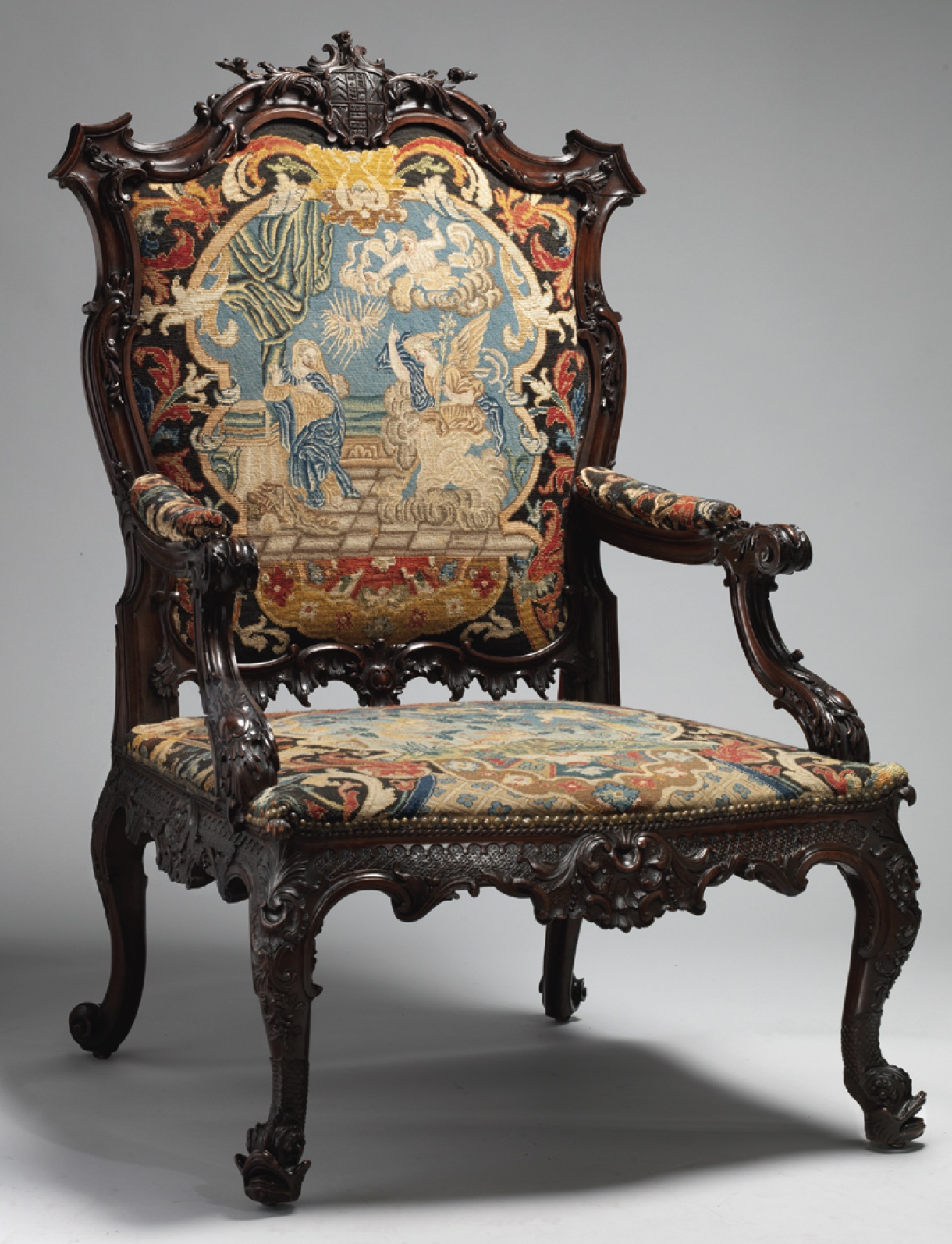
The most famous example was Charles-Joseph Natoire and Germain Boffrand’s La Salon de la Princesse (1735-1740) in the celebrated residence of the Prince and Princess de Soubise.
The rococo interior had a softer and more private feel rather than the more intimidating earlier baroque spaces which had preceded them.
While the heart of the style remained firmly in France, the rest of Europe went wild for rococo in architecture and interiors – in Venetian palazzos, Sanssouci at Potsdam, Charlottenberg in Berlin, and in castles in Austria, Scandinavia and Russia.

Britain and rococo
While Europe adopted the style wholescale, in Britain, with its prevailing sombre Protestantism, rococo was chiefly limited to the decorative and applied arts – furniture, mirrors, wall lights, porcelain, silver, textiles – with a few exceptions, such as Claydon House in Buckinghamshire, where many rooms were lavishly decorated in applied rococo plasterwork and carvings.
Many European artisans were employed in London, Birmingham and other major cities to help manufacturers produce the rococo style where it was known as the “French style”. The movement also coincided with technological advancements in woodworking, marquetry, and decorative arts which allowed a greater intricacy and finesse in craftsmanship.
From 1742, the furniture designers and cabinet makers Matthias Lock and Henry Copland published a series of prints which introduced a distinctly British form of rococo scrollwork which was hugely influential in promoting the rococo style. Rather than copying the entire design, woodcarvers would mine them for inspiration, cutting them up and adding their own ideas.
Rococo and the decorative arts
In Britain, rococo found its truest expression in the applied arts primarily via silver and other designs by immigrant workers including Huguenot refugees from France. Rather than existing on its own, it joined other anti-classical styles including gothic and chinoiserie that peaked in popularity between 1740 and 1770.
The silk weavers of London’s Spitalfields developed a particularly English interpretation of rococo, using realistic botanical details in flowers scattered across an open or subtly patterned ground, usually in asymmetrical arrangement, with clear, true colours.
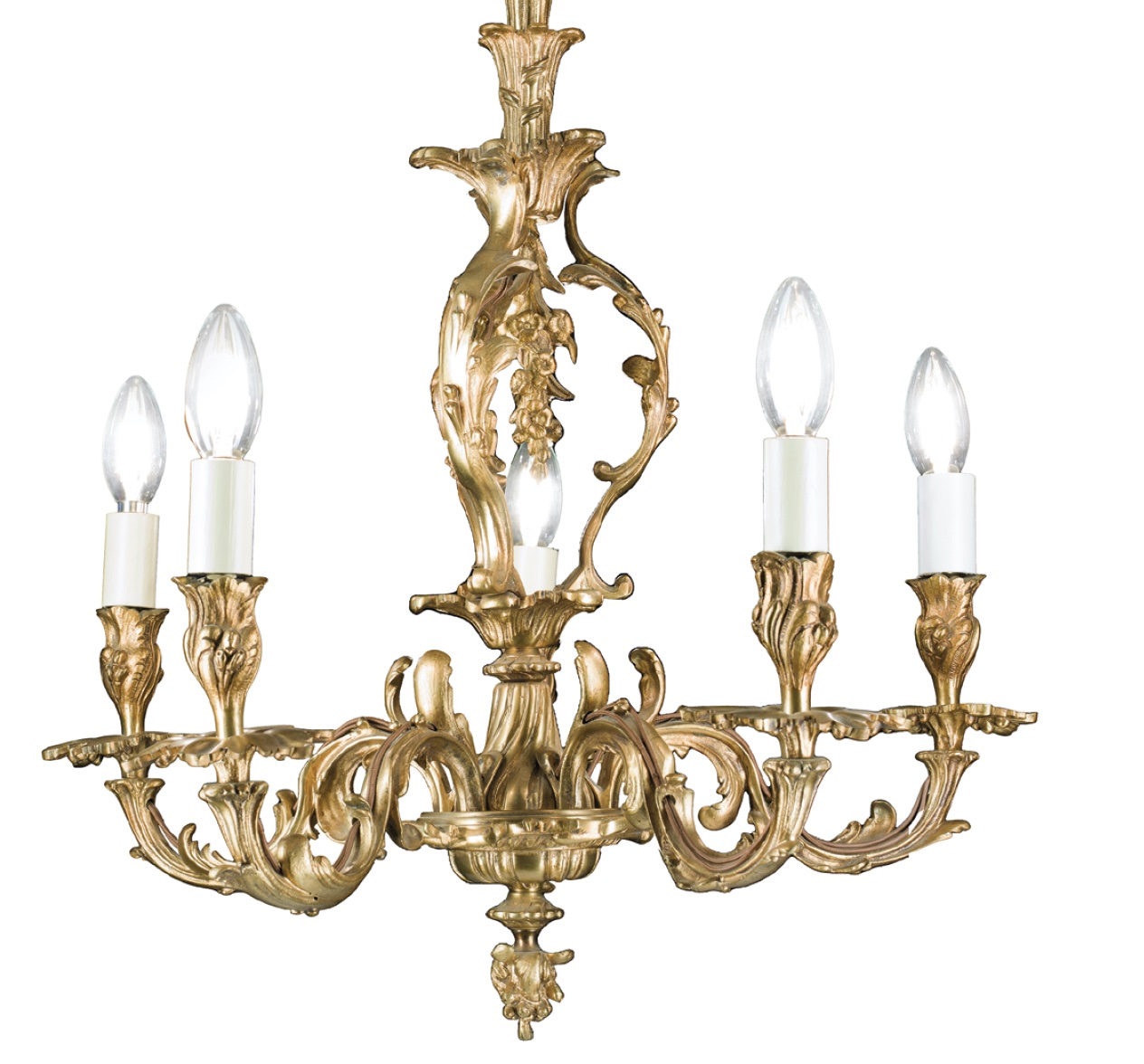
Meanwhile, Paul de Lamerie (1688-1751) was one of the leading English silversmiths in the first half of the 1700s. De Lamerie’s parents, French Huguenots, probably left France for religious reasons in the 1680s, emigrating to the Netherlands before settling in London in 1691. While his early works were simple, unornamented shapes, by the 1730s he was one of the first English silversmiths to work in the ornate rococo style.
Rococo revivals
There was a rococo revival in the early 19th century, driven in part by a fashion for collecting luxury furniture and objects that flooded the European market from the 1790s after the French Revolution.
Sometimes referred to as the Louis Quinze style, the revival reached a peak in the 1830s, coinciding with the reign of the last Georgian monarch, William IV. By then designs could be replicated more readily in new mass manufacturing methods, such as silverplate, factory chinawares from Staffordshire and printed (rather than hand-painted) wallpapers, making the style more accessible to a wider audience than it had been a century before.
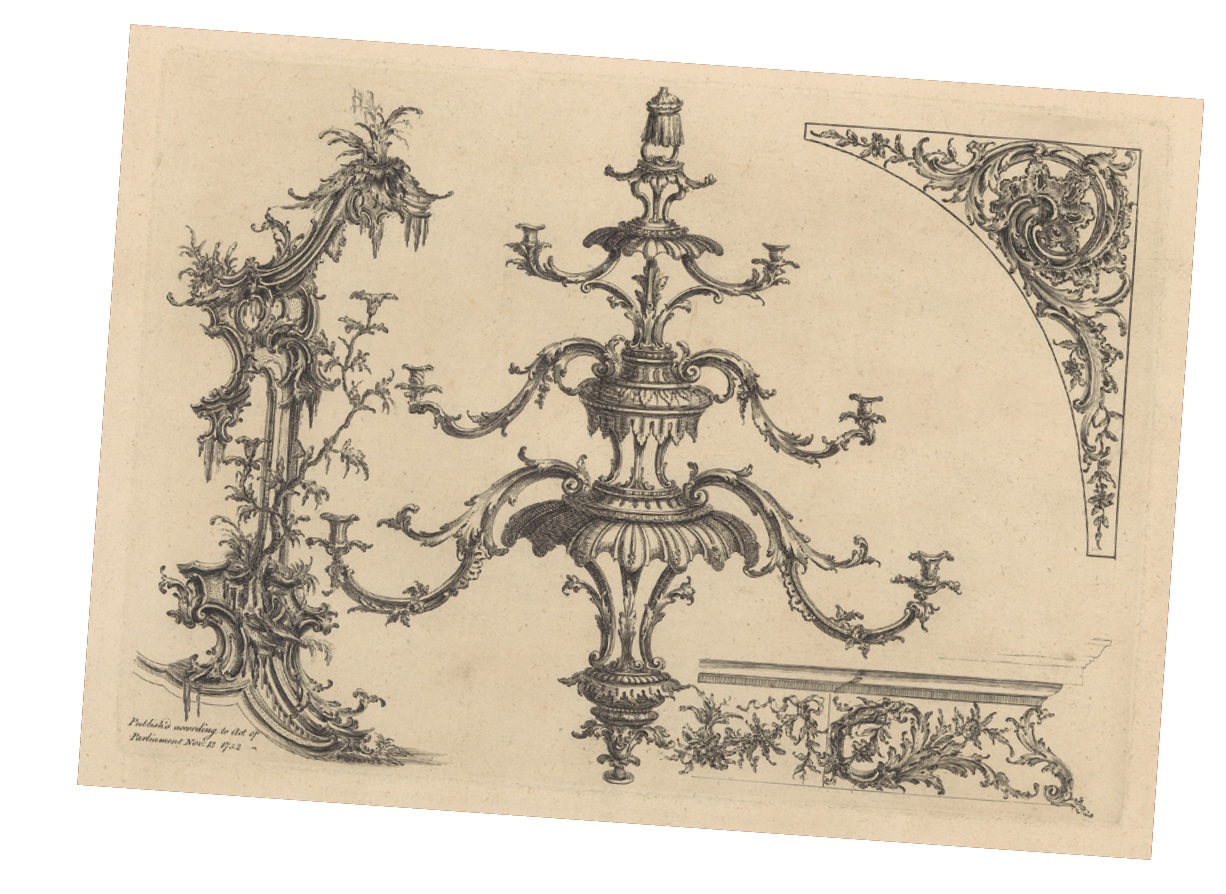
It found favour in the salons of wealthy American homeowners who had travelled to Europe and seen for themselves the extraordinary rococo decoration at Versailles, Venice and many Germany and Prussian palaces.
It was replicated in luxury French hotels in the first half of the 20th century, and in Britain was revived again after WWII at a time when tastemakers such as Cecil Beaton and Oliver Messel found the romantic aura of rococo was a suitable antidote to the austerity of the war years.
British rococo makers
The most notable interpretation of English rococo came with the publication of Thomas Chippendale (1718–1779) The Gentleman and Cabinet-Maker’s Director, published in 1754, which showcased various furniture styles in the Chinese, gothic and rococo, the latter incorporating intricate carvings, flowing lines, and decorative motifs.
William Vile (1700–1767) and John Cobb (1710–1778) also adopted the use of carved rococo motifs including the “raffle lear”, a lighter form of the acanthus.
Benjamin Goodison, active between 1727-1767, was another of the most capable cabinetmakers of the Georgian period known for mahogany designs with gilt decoration. He also favoured an acanthus leaf scrolling into a central shell with garlands and trophies of plumes.
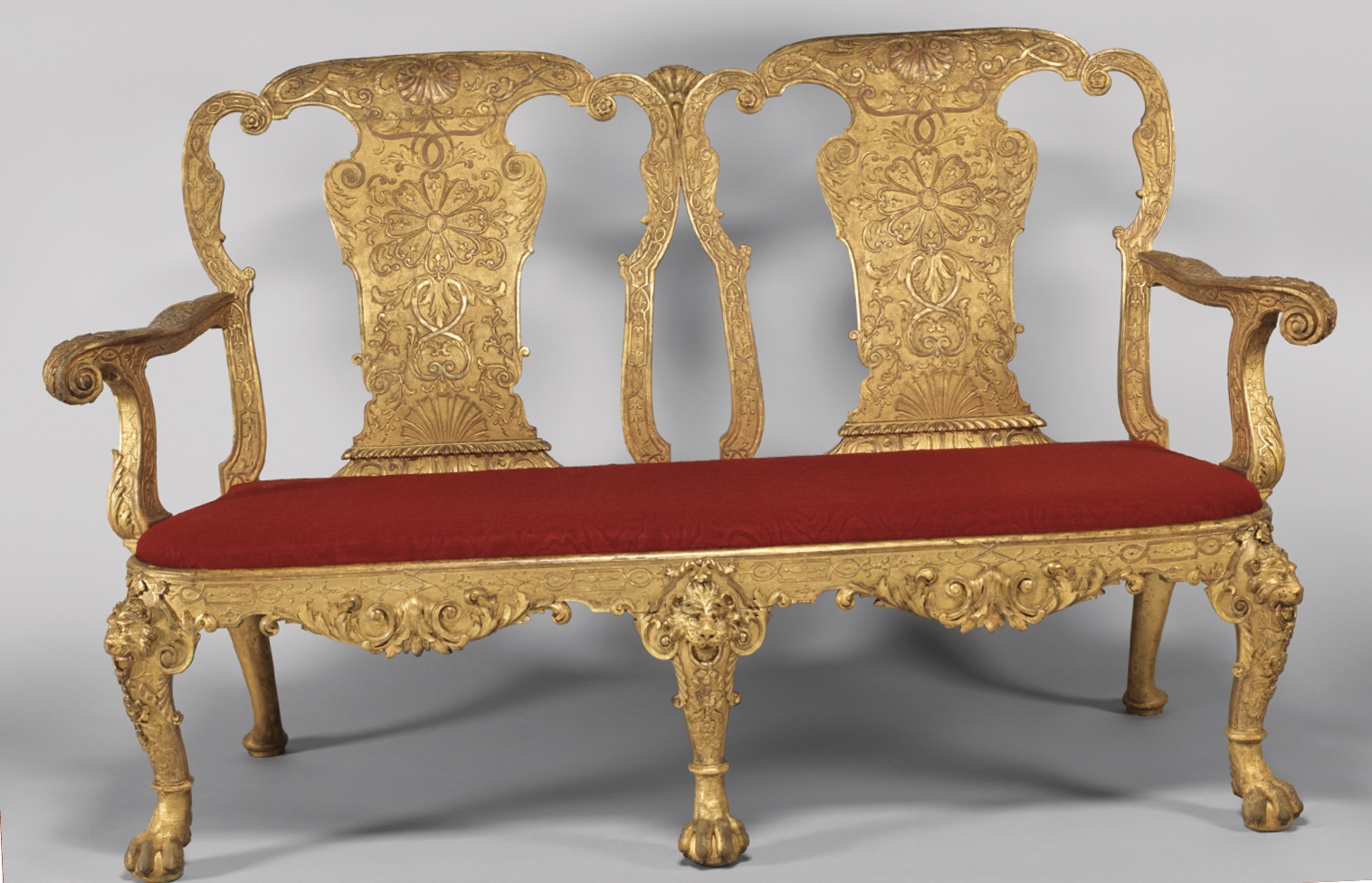
Also of note is the work of Giles Grendey (1693-1780) from Gloucestershire who went to London in 1709 and whose thriving workshop produced furniture for export. A typical feature of Grendey’s work is the incorporation of double serpentine panels in the backs which are often veneered in walnut.
7 European rococo furniture makers every collector should know
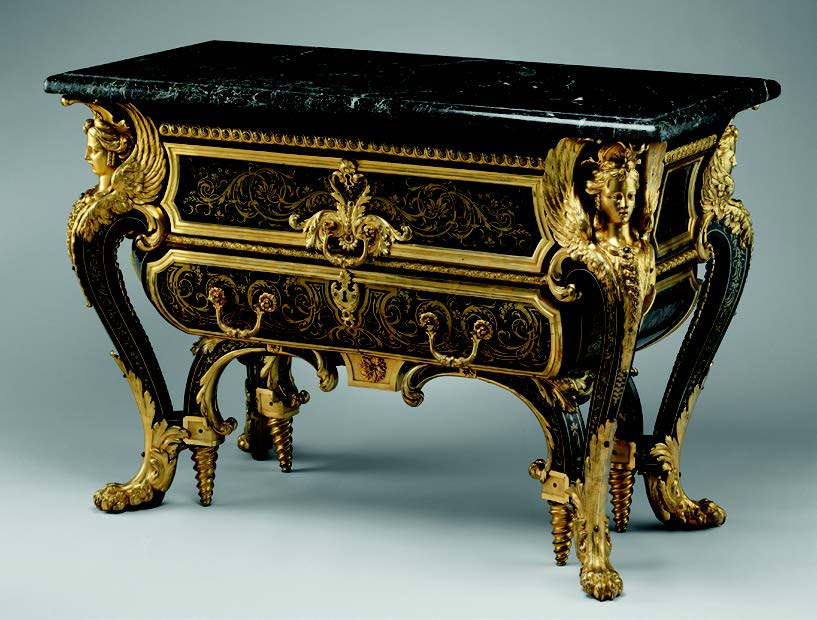
1 André-Charles Boulle (1642–1732): While Boulle is known for his work across multiple styles, he is particularly famous for his contributions to the transition from baroque to rococo. He created furniture with intricate marquetry and inlay work combined with the use of contrasting materials like brass and tortoiseshell.
2 Jean-François Oeben (1721–1763): Oeben was a French ébéniste (cabinetmaker) known for pieces of delicate marquetry, exquisite craftsmanship, and innovative mechanical features like hidden compartments.
3 Jean-Henri Riesener (1734–1806): Riesener was another prominent French ébéniste known for his work during the late rococo and early neoclassical periods. His furniture pieces often featured rich marquetry, elaborate gilt-bronze mounts, and elegant designs.
4 Juste-Aurèle Meissonnier (1695–1750): Although Meissonnier was primarily an ornamental designer he also created intricate and imaginative designs featuring asymmetrical shapes, sinuous curves, and whimsical motifs.
5 Louis Delanois (died 1768): Delanois was a French cabinetmaker who crafted rococo-style furniture, known for its intricate carving, floral motifs, and graceful curves.
6 Johann Michael Hoppenhaupt the Younger (1709–1763): A German cabinetmaker known for his rococo furniture featuring carved foliage, flowing lines in mahogany and other exotic woods.
7 François Linke (1855–1946): Linke was a notable French ébéniste known for his revival of the Rococo style during the late 19th and early 20th centuries. He recreated Rococo furniture with exceptional craftsmanship and intricate detailing.
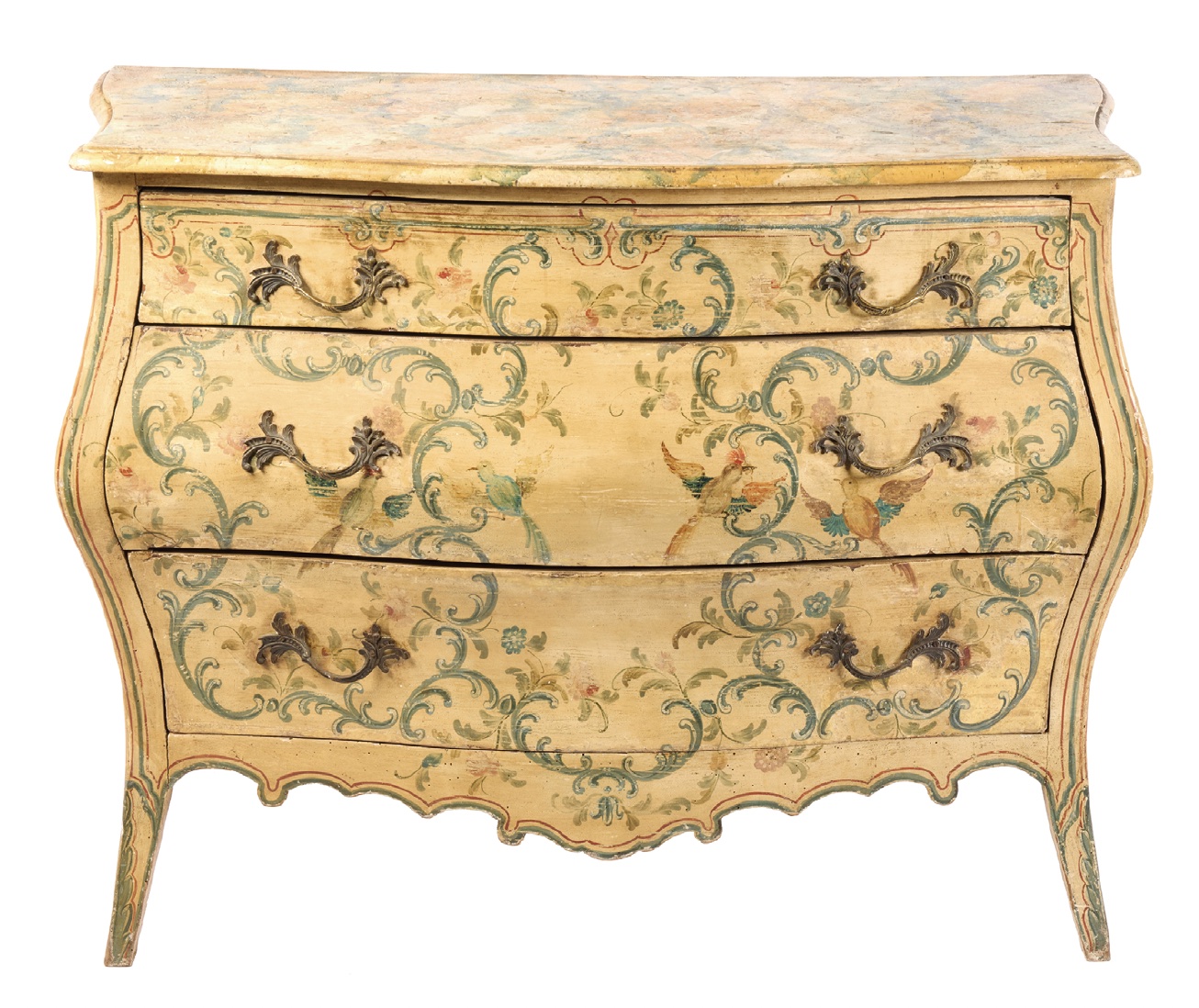
Rococo Art
Art patrons in the rococo period were often members of the rising middle class, rather than, as previously the aristocracy or the church. In France, artists such as Jean-Antoine Watteau (1684-1721), François Boucher (1703-1770) and Jean-Honoré Fragonard (1732-1806) painted picturesque scenes known as fête galante.
In England rococo became popular largely due to the French artist Hubert François Gravelot (1699-1773) who was living in London when William Hogarth (1697-1764) founded St. Martin’s Lane Academy in 1735. Gravelot was a former student of Boucher and the school became the seat of English rococo, with one of its most notable pupils being Thomas Gainsborough (1727-1788). A landscape artist at heart, Gainsborough’s portraits of fashionably-dressed people in outdoor settings, including his best-known The Blue Boy (c. 1770), were typically rococo in style.
1 European School, pastel on paper mounted on canvas, late 18th century, provenance Ernst Museum auction, offered from Darnley Fine Art at the Decorative Fair
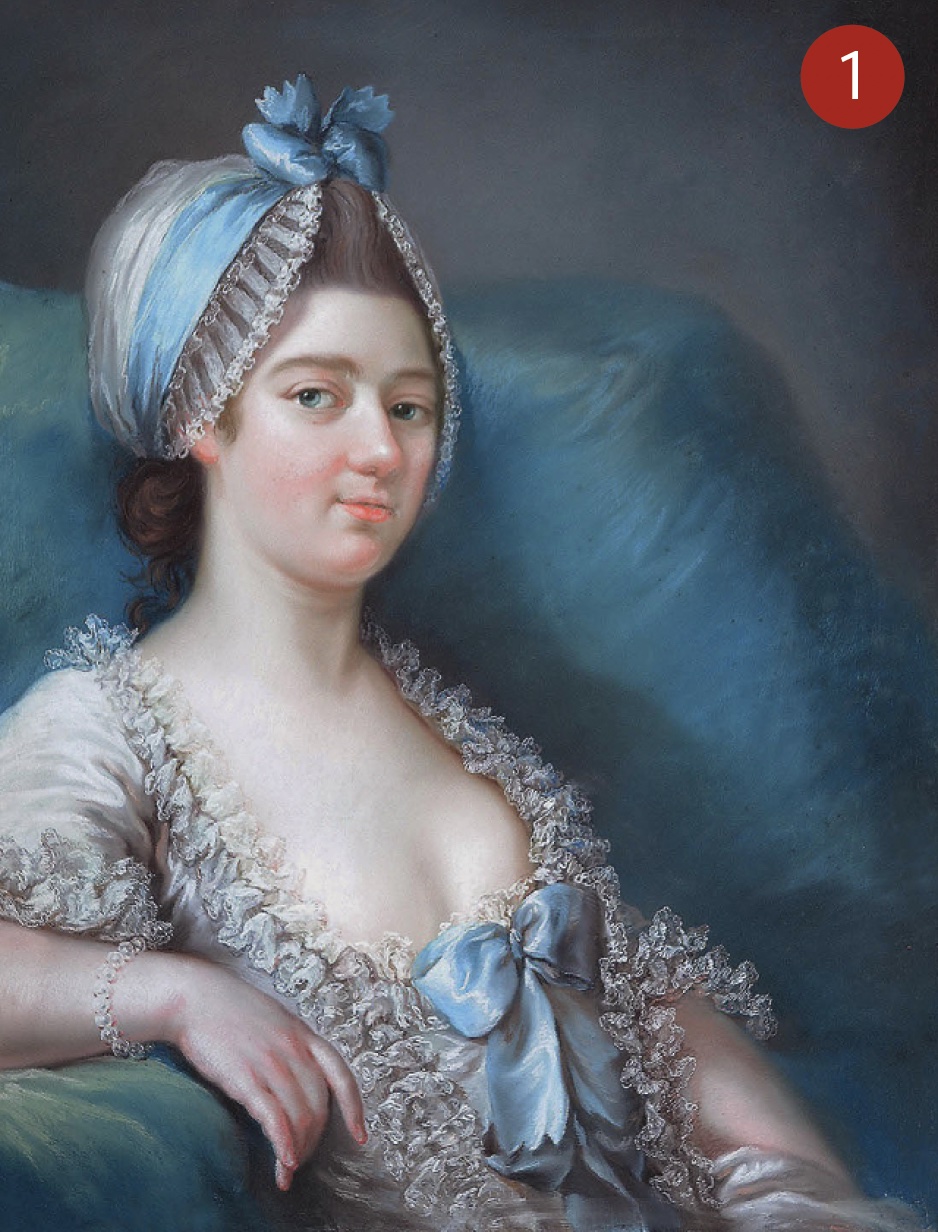
2 Style of Jean-Baptiste Greuze (1725-1805) Portrait of a Young Boy with Birdcage, oil on canvas, was offered by Darnley Fine Art at the Decorative Fair
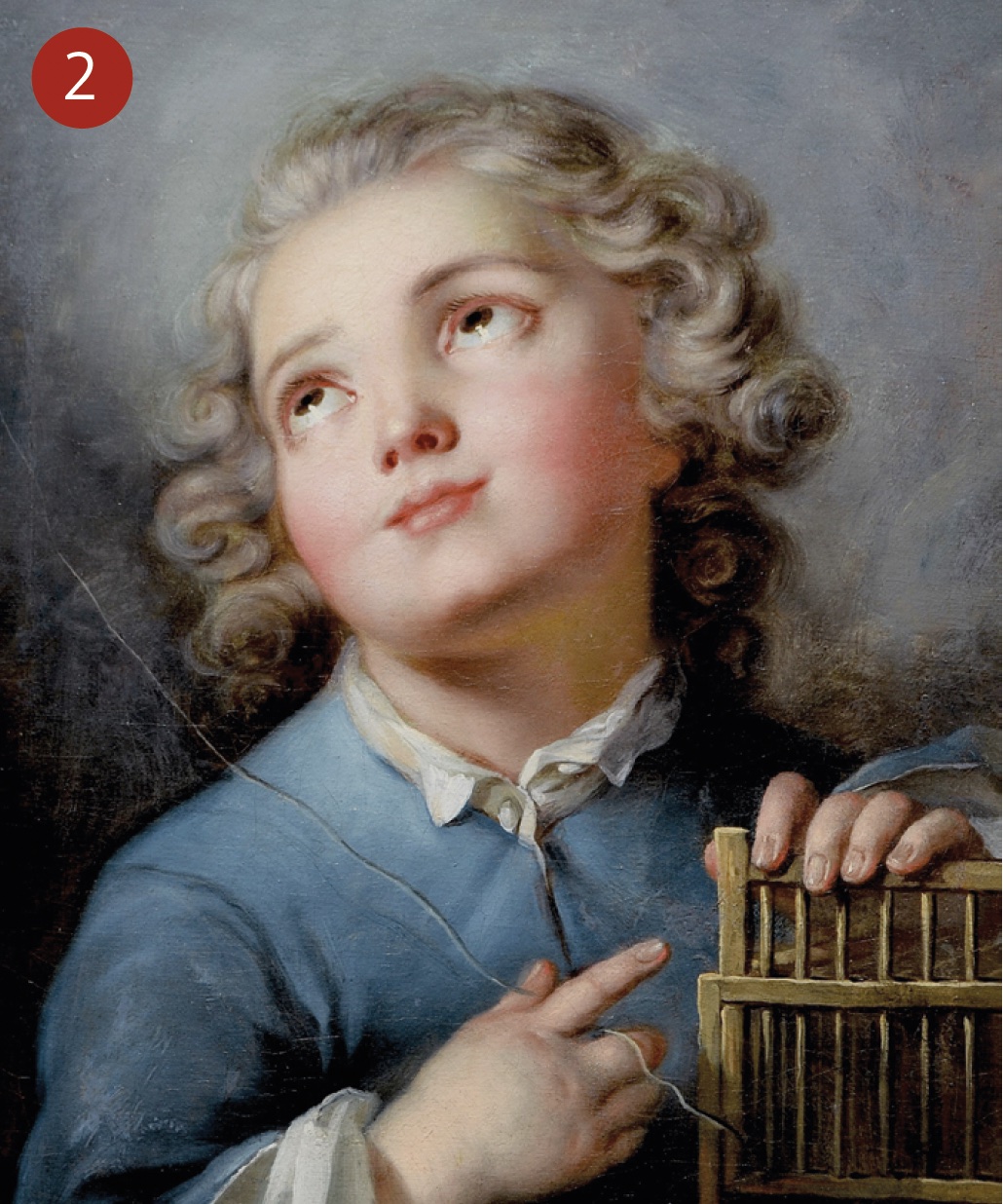
3 Jean-Honoré Fragonard (1732-1770) The Swing, oil on canvas, c. 1767, the Wallace Collection, London, image public domain
